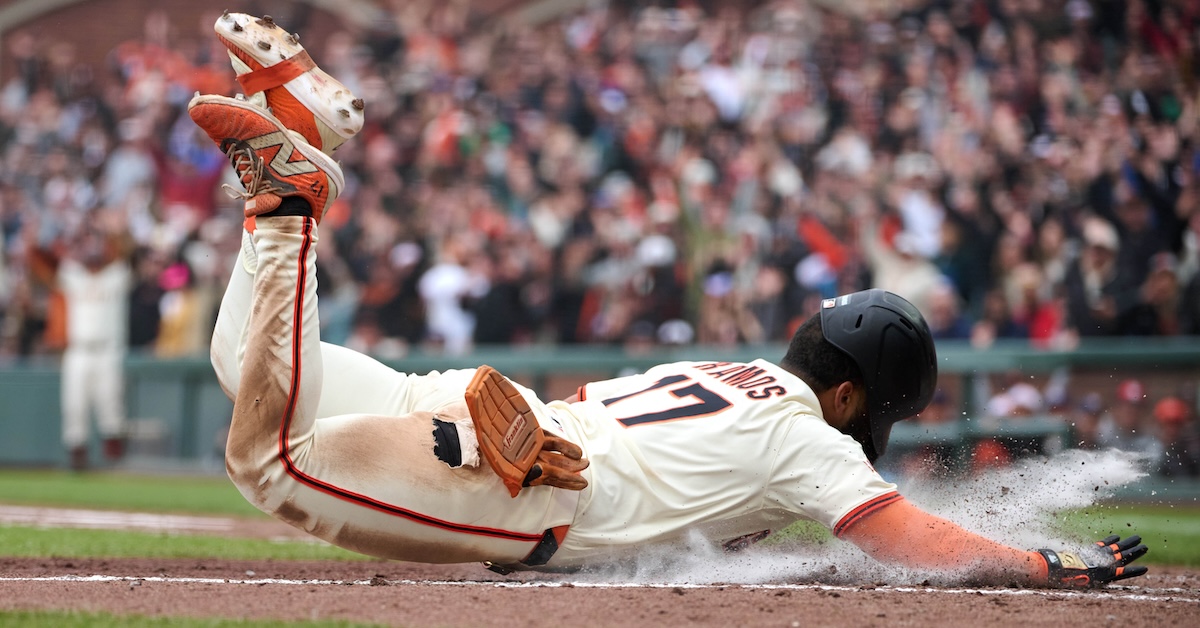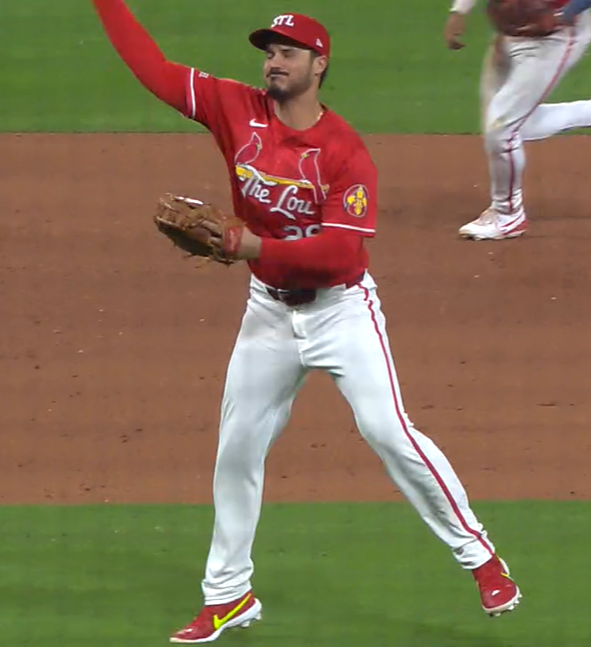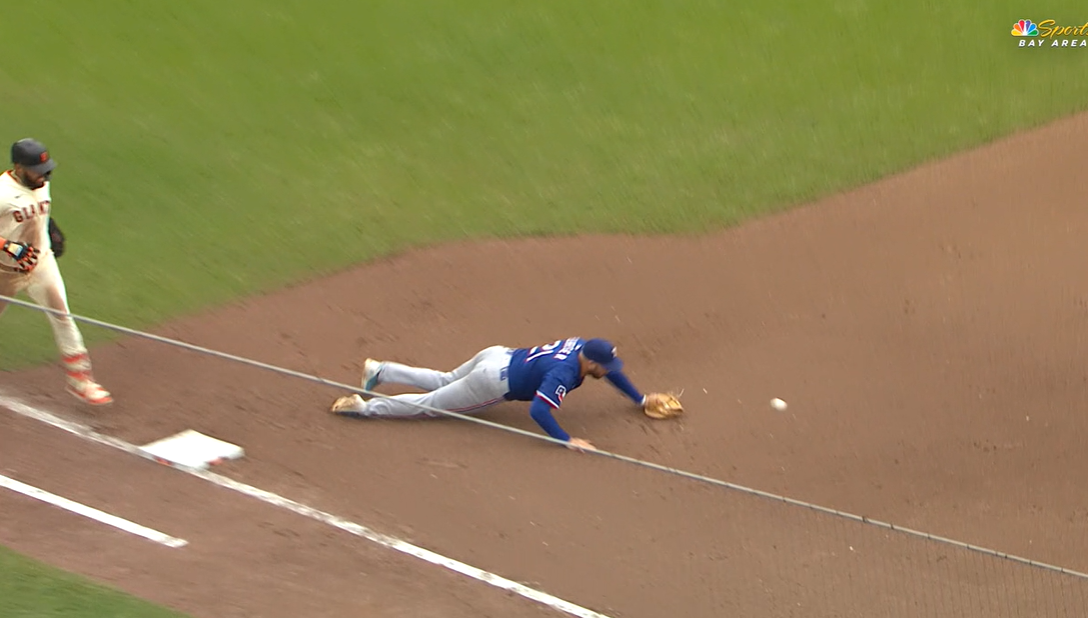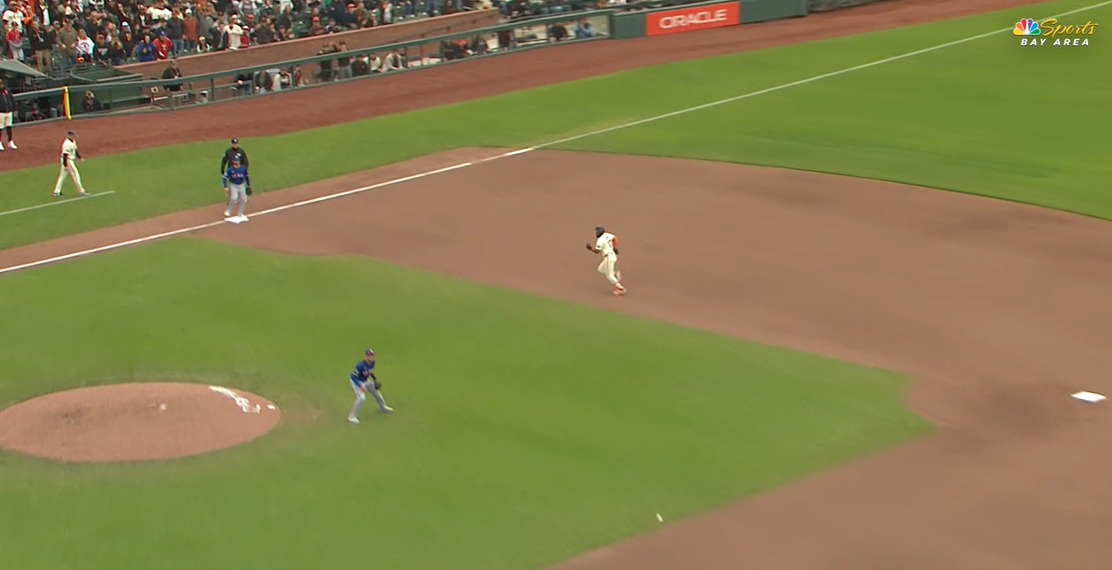Five Things I Liked (Or Didn’t Like) This Week, May 2

Welcome to another edition of Five Things I Liked (Or Didn’t Like) This Week. With the first month of major league baseball in the books, I’m settling into the rhythm of the regular season. Baseball writing in the morning, baseball on TV in the afternoon, and usually baseball on TV in the evening. Every so often, I’ll skip two of those and go to the ballpark instead. The actual baseball is falling into a rhythm, too. The Dodgers have the best record in baseball, Aaron Judge is the best hitter, and Paul Skenes is the best pitcher, just like we all expected. But part of the rhythm of baseball is that the unexpected happens multiple times a day, and that’s what Five Things is for. With a nod of recognition and thanks to Zach Lowe of The Ringer for the column format, let’s start the shenanigans.
1. Stopping at Third
The math is pretty easy: A double with runners on second and third scores both runners. Sometimes it even brings home a guy standing on first at the start of the play, too. Last week, though, things got weird. First, Jacob Stallings flat out demolished a ball off the right field wall, but Hunter Goodman didn’t have the read:
Hey, that happens. There are a few plays like this in the majors every year. The batter can tear around the bases as much as he wants, but runners have to stop and make sure it’s a hit first. Goodman couldn’t be sure that the ball would hit the wall, and with no one out, he quite reasonably played it safe. Blake Dunn played the carom perfectly, and again, with nobody out, Goodman didn’t try his luck at home.
But then it happened again. On Saturday, Nolan Jones laced a line drive to right center, and Steven Kwan only got one base out of it:
Kwan is an excellent baserunner, and it’s fair to think that he considered the context here. With the low-strikeout Guardians offense working, reaching third base with no one out is nearly as good as scoring. Reaching third with only one out is great, too. And so Kwan tagged up at second, planning on advancing if Wilyer Abreu made the catch:
Even though both of those decisions seem perfectly reasonable to me, it was wild to see them happen consecutively. A runner failing to score from second on a double on back-to-back days? That happened on consecutive days twice in all of 2024. It’s not unheard of, but it had my antennae up. Then I went to Sunday’s Giants-Rangers game, and Five Things favorite Jake Burger did this:
This one might require a bit more explanation. Joc Pederson hardly has blazing speed, and yet he cruised into second. There was never any chance of a fly out, so tagging up wasn’t necessary. But bad reads can happen anywhere:
More specifically, Burger just didn’t commit soon enough. When he saw Chapman retreating and diving, he put it in neutral, but he spent a little too long chopping his feet before putting it back in gear:
Look, it’s not the end of the world. Burger scored two batters later. Goodman and Kwan also scored. But three of these in three days? You don’t see that every… uh, every three-day span, I guess. In fact, these three are the first three times that this particular play has happened all year. It didn’t happen on back-to-back-to-back days at any point last season. Maybe that’s what Burger and third base coach Tony Beasley were talking about after the play:
2. When the Lesser Lights Shine
The Dodgers are a juggernaut because of their peerless array of top-end talent. Shohei Ohtani, Mookie Betts, and Freddie Freeman? Will Smith doesn’t even bat in the top four? They have how many aces? How many elite closers? The very best that Los Angeles can offer is better than anyone else’s. But those guys can’t be at the plate or on the mound all the time, and when the Dodgers are scuffling, the bottom of the lineup can feel like a headwind. The Dodgers scored only seven runs in their series against Texas a few weeks ago, for example, while the 7-9 spots in the lineup went 5-for-29 with no homers and no walks. One of those hits was even from Smith pinch-hitting. Hey, bad stretches happen to everybody, and this is the bottom of the lineup for a reason.
But when those parts of the Los Angeles lineup heat up, watch out. Immediately after that Texas series, the Dodgers scored 67 runs in their next eight games, and that span included a game in which Skenes shut them out. That’s roughly 10 runs per game in the other seven. And you better believe that the bottom of the order got involved. Their 7-9 batters hit .333/.404/.526 in those games. Andy Pages slashed .600/.619/1.050 during that stretch, and Enrique Hernández had a .958 OPS.
When the bottom of the order is clicking like that – and I make no promises about the sustainability, to be clear – the Dodgers feel completely unstoppable. Facing the top of their order is hard even if the rest of the team isn’t hitting. When you have to face them more often because no one else is making outs, and with runners on base because, again, no one else is making outs? Good luck. You can’t make a living getting the three-headed MVP monster out. Those guys got their hardware for a reason. They’re going to produce. When that production is driving in the bottom of the order, or getting driven in by the bottom of the order, the Dodgers offense is an absolute terror.
3. Off-Balance Miracles
Don’t try this at home:
The angles make no sense here. Nolan Arenado caught that ball running sideways rather than toward home, and he lunged toward right field to snare it, putting him in a terrible position to go to the plate. Jackson Chourio is an elite baserunner. With no force play, even a perfect throw might not have been enough. But with a one-run lead, one of the greatest defenders of our generation did what he does best: improvise.
Watch his feet as he plays this one:
There was no way to put his lower body into the throw, because his feet were carrying him across the infield. Try running left and putting some power on a right-handed throw. You’ll realize how unnatural it is. There’s no part of your body that you can rotate for extra power; it’s like throwing from a seated position, only worse, because instead of merely not helping you out, your momentum in this case is going in the opposite direction, making it harder to throw accurately.
Arenado, naturally, hit Pedro Pagés in the glove. Because of course he did; he’s Nolan Arenado. He’s always been an excellent off-platform thrower. Many of his defensive highlights involve unconventional arm angles or strange throwing motions. But even for a great defender, this one was sensational. The broadcast didn’t have a perfect snapshot of the moment he released the ball, but at least there’s this:

Yeah, that doesn’t look like someone throwing the ball accurately. The wrong leg is planted, the wrong shoulder is forward, and are his eyes closed?? I think he was probably just blinking, but after that magic trick, I’m willing to believe that Arenado can do anything defensively. What a gem.
4. The Big Bopping A’s
The A’s came into the 2025 season with the potential for a positional logjam. Brent Rooker, their best hitter, plays DH. Tyler Soderstrom, their top pick in the 2020 draft, has migrated from catcher to first base looking for a defensive home. Nick Kurtz, their top pick a year ago, plays first base and hit so well in the minors that the A’s simply had to call him up. That’s three guys for two spots – something had to give.
There are plenty of ways to handle this, many of them bad. The A’s could do some kind of soft platooning, having Kurtz back up Soderstrom while also letting the newcomer get at-bats against some righties in order to give Rooker a day off. They could make Soderstrom a part-time catcher, despite plenty of evidence that it’s a poor long-term fit. They could put Rooker back into the outfield, though he’s never been good out there and just turned 30. The A’s chose none of these options, though. Instead, they picked the highest-upside one and told Soderstrom to learn left field in a hurry.
That’s a crazy move for the former catcher. His first professional appearance in the outfield was two weeks ago. His reads need some work. He looks tentative out there, and who could blame him? He’s not used to seeing the ball from this angle, and he hasn’t even had an offseason to work on it. He doesn’t have the speed to make up for bad jumps or routes – he’s not slow, but he’s also not fast.
So what? As long as having to learn a defensive position on the fly doesn’t mess with his confidence at the plate, the possible benefits of it could be well worth the cost. The A’s need to figure out whether they can play with Rooker, Soderstrom, and Kurtz all in the same lineup, and the alignment they settled on seems like the best long-term solution. They absolutely had to try it, and I’m happy that they ripped the Band-Aid off now rather than kicking the can down the road.
Soderstrom even made a nice catch on Wednesday! Take a look at this beauty:
Awkward? Sure. But athletic, too, and that’s a really difficult play; it’s not exactly where you’d expect to run into a chain link fence. He actually got tangled up in the fence a bit on his leap, which ended up making the catch easier, since he might have overshot the ball otherwise. I don’t think he’s going to win a Gold Glove anytime soon, but for a guy who got moved to the outfield more recently than I’ve put gas in my car, it was a heck of an effort.
Will this all work out? I have no idea. It hasn’t really clicked yet – an inning after he made that catch, the A’s brought in Seth Brown to pinch-run and then play defense. When Seth Brown (career Outs Above Average in the outfield: -9) is coming in for defense, you know something weird is happening. But kudos to the A’s for trying to squeeze three first base/DH types into their lineup, and kudos to Soderstrom for going along with it.
5. Walk-offs
Everyone loves a walk-off, unless it’s against their team. The excitement! The sudden-death drama! The ball slowly bouncing toward the pitcher as the runner sprints for first. Wait, were you guys not thinking of the same walk-off that I was?
There’s just so much to love about this play. First, I love how committed Luke Jackson was to converting that batted ball into an out. Now, should he have been? Definitely not! Watch this snippet of the play, imagine that you don’t know how it ends, and try to guess where the ball goes:
Right field, right? That’s what you guessed? Good. Now, remember when I praised Arenado for his ability to make difficult, off-platform throws? Jackson is not Arenado. Falling away, off the wrong leg, sidearm? No chance. Look at how far off the bag Burger went trying to get this ball:

Jackson should have eaten it, or at least let third baseman Josh Smith handle it. After his ill-fated effort, it was just a matter of how far Heliot Ramos could run before the Rangers recovered the ball. And about that:
Poor Burger. When you dive on the infield like that, you’re essentially taking yourself out of the play if you don’t snare the ball. But there was no backup. Adolis García flat out lost the ball. He was playing deep and shaded toward triples alley in right center, but he took an abysmal route to play the carom, staying so deep in the outfield that he left Burger on an island. How many first basemen dive and then also throw the ball from 60 feet deep in the outfield on the same play?
From there, it just got worse. Jackson got up from his sprawling tumble and ambled ineffectually into foul territory. I don’t know every team’s infield rotations, but my money says Jackson was supposed to be the primary backup at third base. It’s an important spot to back up; when an infielder tosses the ball into right field trying to make a play at first, the next throw is almost always a long one from foul territory in right to third base.
Smith then gambled, surely counting on either Jackson or left fielder Dustin Harris to be there backing him up. He stayed on the bag for as long as possible, hoping to tag Ramos out, instead of leaving the base to play the ball. I can understand why; a runner on third with no one out is nearly as bad a situation for the Rangers as what actually happened. The downside is theoretically small, too. With the ball having been in play for so long, and the action so far away, surely one of the two players tasked with backing up would be there to get the ball if it skipped past Smith. Only, nope:

In fact, Ramos inadvertently led Smith to take that risk by getting a bad read at second base. He, like pretty much everyone in the stadium, saw the ball skip past Burger and assumed it was a one-base error. That’s how that kind of play – throwing error on a ball that was fielded near the mound – usually ends. The right fielder plays it off the wall and throws it to third, while the baserunner cruises into second. But when García didn’t show and Burger had to make the play, Ramos picked up the third base coach and stepped on the gas in a hurry:
One player making a mistake? That’s kind of boring. I’ve seen that play a million times. But the more players that make mistakes, the more entertained I get. And in this one, seemingly half the Rangers on the field and also the only Giant on base goofed up. That’s how you end up with a walk-off that travels exactly one foot in the air, with a -66 degree launch angle. I was at this game, as I mentioned earlier, and I lost my mind when this happened. I just couldn’t comprehend how it could’ve been possible. But then, around the time Ramos crossed third base, I stopped tracking who was supposed to be where and just watched the glorious celebration:
Ben is a writer at FanGraphs. He can be found on Bluesky @benclemens.

Great breakdown of that Ramos play. It was fun to watch repeatedly.
Garcia was a long way away, but didn’t do a good job backing up first.
But that pales in comparison to how bad a job Jackson did backing up third. Late and miserably out of position. He was in a good spot to back up a throw from where Garcia was initially aligned in right center, but might as well have been in the clubhouse for where the throw actually came from.